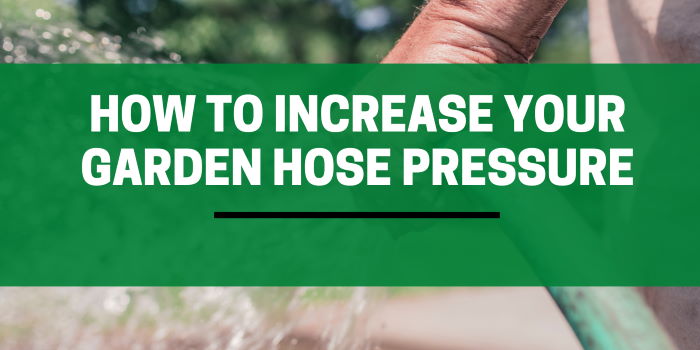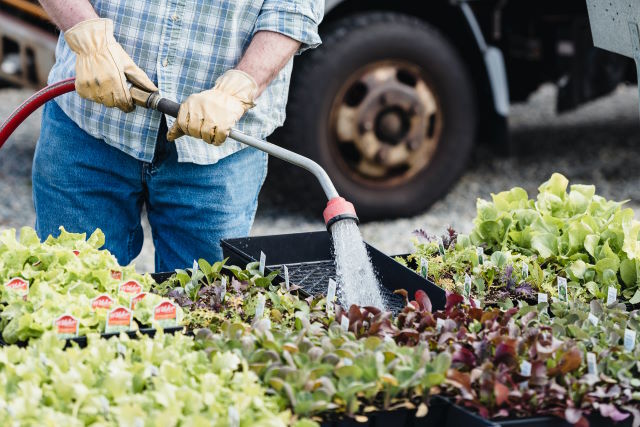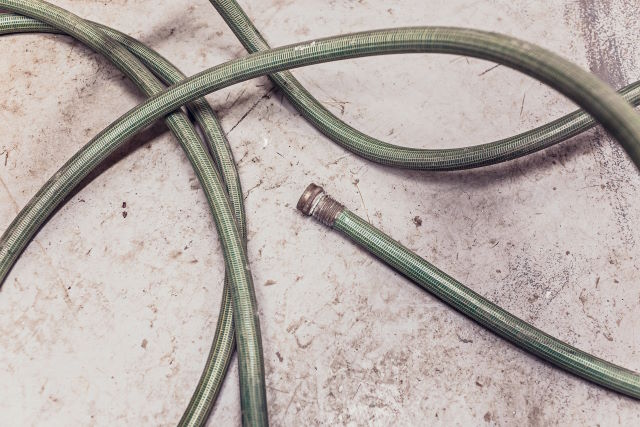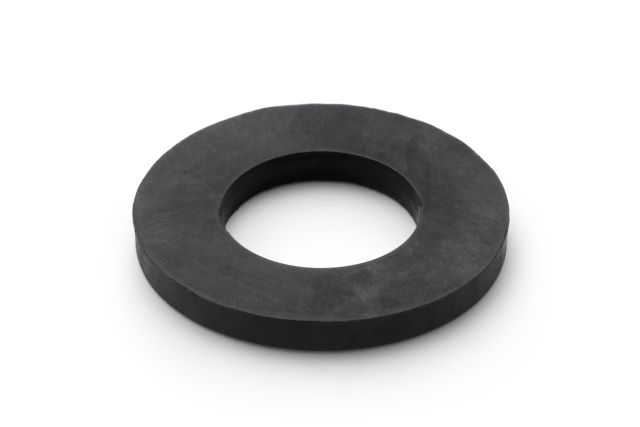
Garden hose water pressure can be important when caring for a healthy and flourishing garden. Adequate water pressure ensures that your plants receive the water efficiently, saving you time and money.
In this article, we’ll explore several ways to increase your garden hose water pressure, providing the best care for your plants and conserving water in the process.
Contents
What Affects Hose Water Pressure?
Before diving into solutions, it’s important for us to understand what contributes to low water pressure in a garden hose.
Water Supply And Demand
The demand for water in your area can influence the water pressure that you experience. High water demands from multiple households or businesses can result in a drop in your water pressure.

The municipal water supply systems may limit the flow of water during periods of high usage or restrictions.
Water Flow Rate And Pipe Diameter
Water flow rate and pipe diameter also play a role in the pressure you experience at your garden faucet.
If you are unsure of the size of your hose, your should measure your hose diameter. A different size may be better suited for your water pressure,
Smaller pipes can cause more water resistance, leading to a drop in pressure. Upgrading your pipes to a larger diameter is a very good way to improve water flow and increase pressure.
Outdoor Faucet And Hose Quality
The quality of your outdoor spigot and hose can impact water pressure. Damaged or clogged faucets, hoses, or connections can result in weak water pressure.
Regularly inspect and maintain these components to ensure optimal performance.
Ways To Increase Garden Hose Water Pressure
Now that we understand the factors affecting water pressure, let’s explore several methods to increase garden hose water pressure.
Check Your Hose For Leaks
If you’ve noticed that your hose has been working just fine before and had pretty good water pressure, but now it’s suddenly not as strong, a leaky hose could be the culprit.

It’s actually one of the most common issues people have with old or cheaper hose pipes, and it can lead to a drastic drop in water pressure.
To figure out if that’s what’s going on with your hose, you should:
- Lay the hose flat on the ground while the water is turned on.
- After that, take a close look at it to see if there are any spots where the pipe might be leaking.
- Keep in mind that the leaks could be coming from really tiny holes, so you won’t spot them by just glancing at the pipe.
- Make sure you get down and take a good, close look.
If you do find a leak, don’t worry! You can fix it right away with a rubber patching kit.
Check Washers And Gaskets
Worn-out washers and gaskets can cause leaks and reduce water pressure in garden hoses. Inspect your hose connection for damage and replace any faulty components to improve water pressure.

Check Your Hose For Kinks
A kinked hose can hinder a smooth flow of water, and it might happen while you’re using the hose. So, if you notice the water pressure dipping during use, take a moment to check.
Scan the entire length of the hose for any tangled areas or twists, and straighten them out.
Also, if your hose is stored on a reel, make sure it has been wound properly and remove any bends or kinks.
Clean Your Hose
It might be to clean the hose pipe. Here’s what you can do: grab a bucket of water and mix in 1/4 cup of bleach. Then, coil the hose and soak it in the bucket for up to 8 hours.
Once that’s done, give it a final rinse by submerging it in plain water for an hour.
Use a High-powered Nozzle
A high-pressure nozzle can help increase water pressure by concentrating the flow of water into a stronger stream. These can be easily attached to the end of your garden hose, providing an instant boost to the PSI output at the hose nozzle.
Check The Main Water Valve
Your main water valve controls the flow of water to your property and outdoor faucet. Ensure that it’s fully open to maximize water pressure.
If the valve is partially closed or damaged, it can impede the flow of water and result in reduced pressure.
Upgrade Your Water Meter
Older water meters may have a lower flow rate capacity, leading to decreased water pressure. Upgrading to a more modern meter with a higher flow rate capacity can help improve water pressure.
Check Your Pressure Regulator
If you have a pressure regulator installed on your water line to maintain consistent water pressure levels, you may be able to adjust it.
This can help ensure that your garden hose receives a steady flow of water, preventing pressure drops and providing your plants with the water they need.
Add a Water Pressure Booster
A water pressure booster is an electric pump that can be installed to increase the pressure of the water flowing through your garden hose.
This is an effective solution if your water supply consistently delivers low pressure or if you have a large garden or home with increased water demands.
Which Method Is Most Effective?
| Method | Cost | Effectiveness |
| Fix hose leaks | Low cost | High |
| Change washers & gaskets | Low cost | Medium |
| High pressure nozzle | Medium cost | Medium |
| Check water valve | No cost | High |
| Upgrade water meter | High cost | High |
| Check pressure regulator | No cost | Medium |
| Add a water pressure booster | High cost | High |
Monitoring And Maintaining Water Pressure
To ensure that your garden hose water pressure remains optimal, it’s essential to monitor and maintain it regularly.
Use A Pressure Gauge
A pressure gauge can be attached to your garden tap to measure the water pressure in your hose. This can help you identify any potential issues and address them before they become more significant problems.
Normal water pressure ranges from 40-60 psi, but the ideal flow rate for your garden may vary depending on your specific needs.
Schedule Regular Maintenance
Regularly inspect and maintain your outdoor water pressure system, including checking for leaks, cleaning your outdoor spigot, and replacing any damaged parts.
This can help prevent future issues and ensure that your garden hose water pressure remains strong and consistent.
Final Thoughts
Increasing your garden hose water pressure is essential for maintaining a healthy, vibrant garden. By understanding the factors affecting water pressure, and implementing the suggested methods to increase the pressure you can provide the optimal environment for your plants to thrive.
You should also regularly monitor and maintain your water system. With just a bit of effort, you can save money on plumbers, conserve water, and save time when watering your garden.
FAQs
Can the type of garden hose affect water pressure?
Yes, the quality and diameter of your garden hose can impact water pressure. Choosing a high-quality hose with an appropriate diameter for your needs can help improve water pressure.
What is the ideal water pressure for a garden hose?
The ideal water pressure for a garden hose is between 40-60 psi, but it may vary depending on your specific watering needs and the types of plants in your garden.
How do I know if my water pressure is too low?
If you notice a weak or inconsistent flow of water from your garden hose, you may be experiencing low water pressure. You can use a pressure gauge to measure the pressure in your hose to confirm this.
Can I increase the water pressure without installing additional equipment?
In some cases, you can improve the water pressure by simply replacing worn-out washers and gaskets or ensuring that your water valve is fully open. However, more significant issues may require the installation of a pressure regulator, booster pump, or other equipment.
Should I consult a professional plumber to increase my garden hose water pressure?
If you’re unsure about how to increase your water pressure or if you’ve tried the methods suggested in this article without success, consulting a professional plumber can help identify and address the issue.
